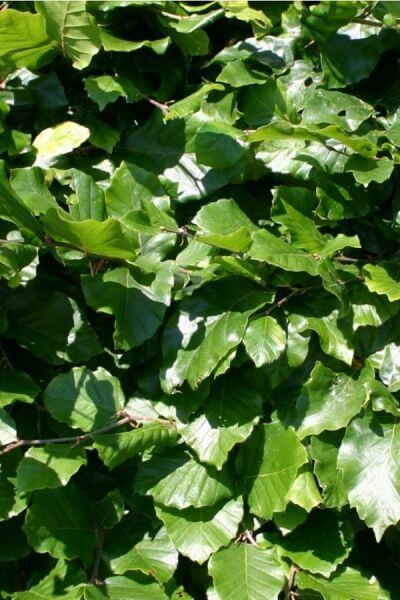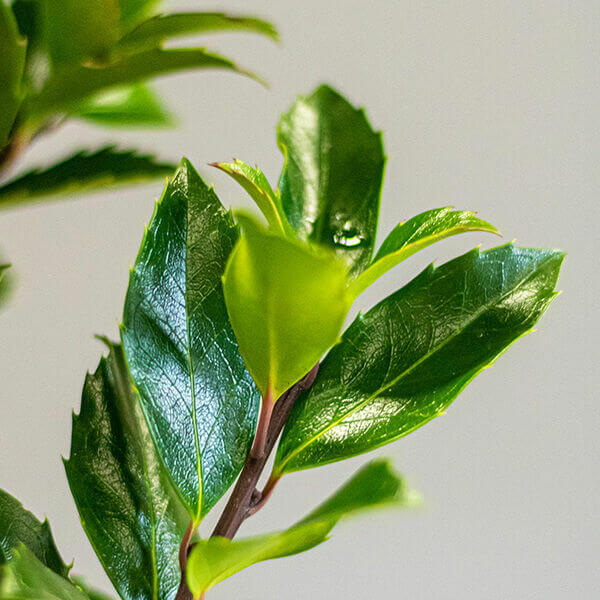Hedge Plants For Creating Boundaries
Hedge Plants For Creating Boundaries
Blog Article
Best Hedging Plants For Garden Rooms
Boost your garden's allure with lavish hedge varieties such as Yew (Taxus), Thuja, Laurel, Photinia, and Bamboo, celebrated for their structural stability and environmental advantages.
Yew and Thuja offer evergreen coverage and winter season durability, while Laurel uses fast growth and broad, aromatic leaves.
Photinia adds seasonal beauty with its dynamic red foliage, and Bamboo provides a low-maintenance, peaceful atmosphere.
These hedges improve air quality, lower noise, and create tranquil, private areas.
Proper planting, spacing, and upkeep ensure energetic development and ecological harmony.
Check out how these lush ranges can elevate your garden's appeal and wellness.
Key Takeaways
Transform Your Garden With Lush Hedge Varieties
- Select Yew for its thick, evergreen development and unrivaled durability.
- Go with Laurel for its fast development and broad leaves, making sure fast personal privacy.
- Pick Photinia for its vibrant seasonal foliage, which turns a striking dark red.
- Make use of Bamboo for a low-maintenance, winter-hardy hedge with aesthetic appeal.
- Area plants 2-3 per meter and prune frequently for optimum growth and health.
Popular Hedge Plants
When transforming a garden with lavish hedge varieties, it's necessary to consider popular hedge plants such as Yew, Thuja, Laurel, and Photinia due to their distinct qualities and advantages.
Yew (Taxus) is extremely respected for its durability and thick, green development, making it a prime option for sustaining landscapes.
Thuja is kept in mind for its evergreen foliage and robust winter season resilience.
Photinia adds seasonal vibrancy with red leaves that darken over time, creating dynamic visual appeal.
Laurel offers rapid development and aromatic, broad leaves, suitable for quick privacy.
Additionally, Bamboo is an excellent option for atmosphere, providing a low-maintenance, winter-hardy option that boosts the garden's visual with its classy, swaying walking canes.
These choices accommodate a variety of horticultural requirements and choices.
Benefits of Garden Hedges
Garden hedges offer a wide range of benefits, making them a valuable addition to any landscape. These natural barriers are cost-effective to carry out and offer significant wind defense, boosting air flow and contributing to sound reduction. The thick foliage of hedges like Thuja and Beech guarantees personal privacy by obstructing presence, producing a secluded and peaceful environment.
Hedges likewise play an important function in microclimate policy, supplying a stable environment that promotes plant growth and minimizes temperature fluctuations. Their elaborate leaf structures filter toxins, improving air quality and contributing to a much healthier garden ecosystem.
Additionally, hedges master sound decrease, absorbing and deflecting acoustic waves to lower ambient sound levels. This dual functionality of offering both acoustic and visual personal privacy enhances the general serenity and aesthetic appeal of any garden.
Planting and Upkeep Tips
For an effective hedge, precise preparation of the planting area is vital. Guarantee the soil has proper pH and drain to support strong root advancement.
Space the plants appropriately for the selected types. Water the hedge frequently throughout its preliminary development phase, changing as needed with seasonal modifications.
Carry out a systematic insect control and illness prevention method, using chemical or organic treatments when needed. Frequently inspect for aphids, mites, and fungal infections.
Apply mulch to keep wetness and reduce weeds. Seasonal pruning promotes thick growth and air blood circulation, essential for plant health.
Following these guidelines will help you cultivate a dynamic, properly maintained hedge that boosts the beauty of your garden.
Spacing and Trimming Guidelines
Spacing and Trimming Standards
Correct spacing and trimming are important for cultivating healthy, visually appealing hedges. Sufficient spacing guarantees each plant gets adequate nutrients, light, and air flow.
Follow these guidelines for ideal hedge upkeep:
- Spacing: Position hedge plants 2-3 plants per meter to motivate robust development.
- Pruning Strategies: Routine pruning is necessary for keeping preferred hedge height and shape. Cut new growth in summer and cut back older wood during winter season.
- Seasonal Care: Change trimming approaches and schedules according to seasonal requirements to ensure plant health.
- Hedge Height: Regularly display and cut to maintain the wanted hedge height and attain uniform aesthetic appeals.
Complying with these actions will guarantee your hedge flourishes, enhancing both the appeal and functionality of your garden.
Picking the Right Hedge
Choosing the Right Hedge
Selecting the proper hedge includes evaluating factors such as fully grown height, foliage density, and environmental strength. Effective hedge plant selection needs understanding each species' growth attributes and site-specific versatility.
For instance, Yew (Taxus) provides excellent durability and thick development, while Thuja is noteworthy for its winter season strength. In addition, considering upkeep requirements is important; fast-growing species like Laurel or Privet need regular cutting, whereas low-maintenance alternatives like Bamboo or Ivy might be preferable for those looking for very little upkeep.
Ecological aspects such as soil type, light accessibility, and wetness conditions ought to likewise guide the selection procedure. This cautious technique ensures the selected hedges will prosper, providing both functional and visual benefits to the garden landscape.
Delivery and Planting Suggestions
To ensure your hedge plants prosper, they need to be delivered by specialized couriers and planted quickly upon arrival.
Follow these necessary steps for effective planting:
- Soil Preparation: Improve the soil with organic matter to improve drain and nutrient material.
- Planting Depth: Create a trench twice the width and equal to the depth of the root ball.
- Watering Techniques: Water thoroughly after planting, keeping the soil regularly wet however not saturated.
- Mulching: Apply a layer of mulch to keep moisture and reduce weeds.
Consumer Assistance and Service
Given the vital role of timely assistance in horticultural pursuits, our client assistance group is available 6 days a week through telephone, email, and social networks to provide professional suggestions and swiftly address any concerns. Their dedication to quick response times ensures customer complete satisfaction by dealing with queries connected to plant health, ideal planting approaches, and maintenance schedules.

Accessibility
Six days a week
This thorough support group, reinforced by an outstanding 9.3/ 10 client score, highlights our dedication to boosting the gardening experience for every single client.
Frequently Asked Questions
How Long Does It Take for Hedge Plants to Establish?
Hedge plants generally require one to three years to become fully established, with the exact duration varying by types and growing conditions.
Reliable care during this critical duration is necessary for robust growth. Consistent watering, watchful weed control, and appropriate fertilizer application are essential in promoting strong root advancement.
For example, fast-growing types like Laurel might develop more rapidly, while slower-growing varieties such as Yew may take longer. Thorough upkeep speeds up the establishment process, leading to thick and healthy hedges.
What Are the Finest Hedge Plants for Privacy?
The question of the finest hedge plants for personal privacy involves evaluating evergreen and deciduous alternatives.
Evergreen hedges like Thuja, Laurel, and Cypress offer year-round coverage, ensuring constant personal privacy.
In contrast, deciduous hedges such as Beech offer seasonal personal privacy, shedding leaves in chillier months.
Key upkeep tips for personal privacy hedges consist of regular cutting, fertilizing in spring, and correct spacing-- generally 2 to 3 plants per meter.
Additionally, constant watering and persistent weed elimination are important for promoting healthy, dense development.
Can Hedge Plants Draw In Wildlife to My Garden?
Yes, hedge plants can attract wildlife to your garden by offering essential advantages like shelter, food, and nesting sites, therefore improving regional biodiversity. Yew, holly, and laurel are excellent for drawing in birds, while ivy supports a range of bugs.
Nevertheless, it is very important to keep in mind that there are some drawbacks, such as increased upkeep to manage bugs and regular upkeep. Carefully choosing and preserving hedge ranges can help stabilize these downsides and benefits, eventually fostering a sustainable and vibrant community in your garden.
Exist Any Flowering Hedge Plants Available?
Yes, there are flowering hedge plants offered that can boost the beauty of your garden.
For example, Elaeagnus, likewise referred to as Olive Willow, produces fragrant white flowers in the fall, adding a touch of beauty.
Photinia, another popular option, showcases lively red leaves that mature into a rich green, producing a vibrant visual result throughout the seasons.
To make sure these plants thrive, it's necessary Additional resources to practice appropriate pruning strategies and seasonal upkeep, such as cutting new growth in the summer and cutting back in the winter.
These steps will assist keep the health and visual appeal of your blooming hedges.
How Do I Avoid Bugs in My Hedge Plants?
To avoid bugs in hedge plants, use natural bug control approaches and keep correct hedge care. Present beneficial insects like ladybugs, which prey on damaging bugs, to develop a well balanced environment.
Frequently inspect your hedges for indications of problem and without delay get rid of any afflicted parts to avoid the spread. Guarantee the health of your hedges by applying balanced fertilizers and providing appropriate water.
Make use of mulching to keep soil moisture and proper spacing to reduce plant tension and promote robust development. These practices collectively help in reducing pest concerns and keeping a healthy hedge.
Conclusion
In essence, selecting the right hedge varieties such as Yew, Thuja, and Laurel can change any garden into a relaxing haven. These plants supply year-round plant, enhance visual appeal, and deal practical advantages like sound reduction and wind defense.
Appropriate planting techniques, precise spacing, consistent watering, and seasonal trimming are crucial for ideal development.
Trustworthy delivery services and skilled client support make sure a seamless experience from purchase to planting, making it easier than ever to elevate your outside space.
Garden hedges offer a plethora of benefits, making them an important addition to any landscape. These natural barriers are affordable to implement and offer significant wind security, enhancing air flow and contributing to sound reduction. The thick foliage of hedges like Thuja and Beech ensures personal privacy by obstructing exposure, developing a remote and serene environment.

Pruning Methods: Regular pruning is essential for keeping preferred hedge height and shape. Trim brand-new growth in summer and cut back older wood throughout winter.
Report this page